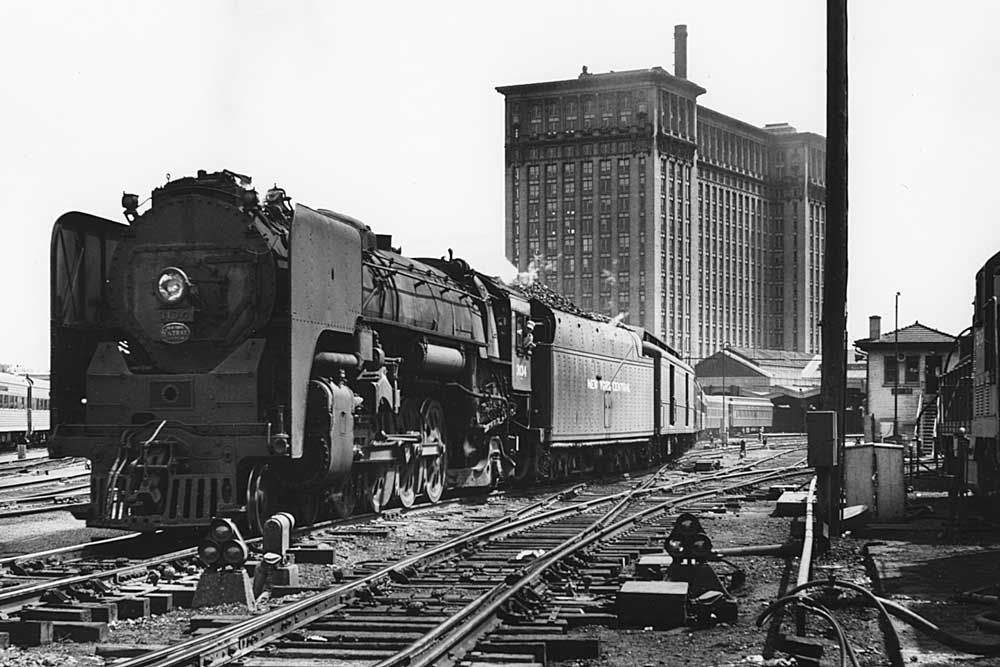
Walking out the 15th Street side entrance to Detroit’s Michigan Central Station last Friday morning, I found myself channeling the great baseball play-by-play man Jack Buck.
“I can’t believe what I just saw!”
Buck’s epic quote came, of course, when Dodger Kirk Gibson launched his epic home run off A’s reliever Dennis Eckersley in game one of the 1988 World Series. It was a shot heard ’round the baseball world. But what Trains passenger writer Bob Johnston and I witnessed on Friday was equally astounding. More so, actually.
We were there to cover the gala grand opening of Michigan Central, a weeks-long event that included a huge Thursday night concert at the front of the station, featuring a platinum lineup of Detroit pop-music stars, followed by a week of scheduled public tours. The concert’s free tickets were scooped up in less than 15 minutes, and thousands of visitors signed up to visit through June 16, according to Michigan Central Station, the Ford-created entity that manages the facility.
Bob and I managed to finagle a spot in the first tour, a 10 a.m. introduction for news media, led enthusiastically by Michigan Central Station Head of Place Melissa Dittmer. The place was crawling with MC Station staff, eager to show off every little detail, all of them beaming, including Dittmer.
The building we walked into was a sparkling vision from another time and place. Thanks to Ford Motor Co. CEO Bill Ford and his 2018 pledge to turn the station and environs into a high-tech research campus — they called it an “innovation center” — Michigan Central has become a faithful version of its 1913 self, one that transcends just about any adjective. Every surface, every square foot, every pane of glass has been either restored or replicated in amazing detail, a level of historic preservation possible only because Ford and his company were willing to spend just short of $1 billion on the place.
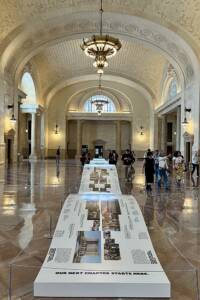
From the cavernous waiting room (the owners now call it the Great Hall) to the multi-columned ticket lobby to the sunlit concourse, the station again fulfills the promise the Michigan Central Railroad implied when it first opened its new headquarters in December 1913. In those days, MCRR made sure travelers arriving on the Wolverine or the Detroit Night Express would immediately know they had arrived in one of America’s greatest cities. The station delivers that same promise today, except, of course, that you can’t arrive by train. More on that in a moment.
If you aren’t from around Detroit, you might be surprised at how gaga a big city has gone for a train depot. But you’d understand if you have followed Detroit’s gradual distancing of itself from that creepy preoccupation known as “ruin porn.” I almost feel like I’m piling on to recall a New York Times headline from 2012: “How Detroit Became the Capital of Staring at Abandoned Buildings.”
The Times would be less likely to write that headline now, given the progress Detroit has made. Recent years have been marked by new downtown sports facilities for all four major-league teams — Tigers, Lions, Pistons, and Red Wings — as well as soaring new office towers and hotels, and, perhaps most important, some reclaimed neighborhoods. Now you can add 114-year-old Michigan Central to the list.
The station Detroit embraces is significant for a number of reasons, starting with the sheer scale of the renovation. As I reported for Trains, “It’s hard to imagine another major American railroad terminal that had fallen as far into disrepair as Michigan Central, only to come back better than ever.” The lengths Ford has gone to get it “right” is amazing, from reopening a quarry in southern Indiana to retrieve the same limestone the railroad used in 1913, to the restoration of tens of thousands of Guastavino tiles arrayed across the arched vaults high above the waiting room. Every little decorative element, every vast stretch of marble floor has received the same attention.
Then there is Michigan Central’s complicated place in architectural history and its relationship to the company that controlled it, New York Central. To design the complex, the railroad hired two of the era’s blue-chip New York firms: Reed & Stem and Warren & Wetmore. Reed & Stem, originally based in St. Paul, Minn., was the principal firm for NYC’s Grand Central Terminal in Manhattan, and Warren & Wetmore designed a number of famous hotels as well as the landmark NYC Building at the foot of Park Avenue.
Bringing two architectural firms onto the project helped lead to criticism that Michigan Central was something of a two-headed monster; Warren & Wetmore’s big, blocky office tower does seem to sit uncomfortably atop Reed & Stem’s fanciful Beaux Arts train station. As The Architectural Record magazine reported when the station opened, “Each part taken separately might be good. Joined together, they are architecturally incongruous.”
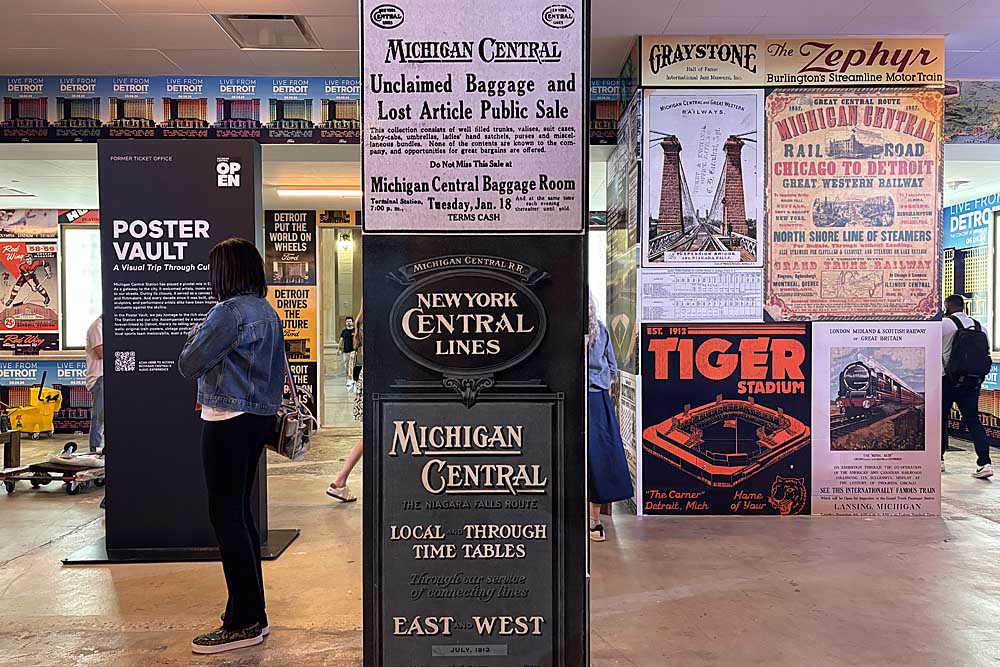
No one is calling the place incongruous now, certainly not me. Ford’s gift to Detroit, indeed to all of us who treasure railroad landmarks, reduces such criticism to mere quibbling.
And Michigan Central is more than just the building, it’s part of a massive complex that stretches east two miles to Canada. The key is the 1.6-mile-long Detroit River Tunnel, which opened in 1910 and literally made the station possible. The tunnel, still in use today, allowed the railroad to bypass cumbersome ferries and give its trains a straight shot all the way east to the Niagara Frontier. It was an engineering marvel for its use of a pair of single-track steel tubes installed in trenches dug into the bottom of the Detroit River.
To underscore the significance of the entire Michigan Central complex, consider this conclusion by authors Garnet Cousins and Paul Maximuke in their two-part, 9,500-word history of the station in the August and September 1978 issues of Trains: “The (station), with its 15-story office tower, was a predecessor of what today is called a megastructure. Megastructures are totally integrated environments, combining within their boundaries parking, transportation access, commercial facilities, office space, and residential space.” In that vein, Cousins and Maximuke make a direct connection between Michigan Central and Detroit’s Renaissance Center of 1977.
Amid all the wonder of Ford’s accomplishment, a question lingers: will Michigan Central ever be a real station again? As in, a place served by actual trains?
That was the question Bob wanted to have answered. As he wrote in his follow-up story for the Trains News Wire, there are no plans at the moment to restore Amtrak service anytime soon. The 18 tracks that originally served the station are gone and the concourse tunnels sealed off. But as Dittmer told Johnston, the station is in talks with Amtrak and the state of Michigan, and she is “optimistic.” We’ll hang onto that.
Meanwhile, Michigan Central says the station’s main floor will be kept open to the public. That’s a wonderful gesture on the part of Ford, a chance for anyone to experience a truly miraculous resurrection of a thrilling public space.
Writing in 2002 about that lost railroad temple of New York, art historian Hilary Ballon said, “Penn Station did not make you feel comfortable, it made you feel important.” Strolling along Michigan Central’s endless terrazzo floors and beneath its vaulted ceilings — thank you, Ford — I felt the same way.
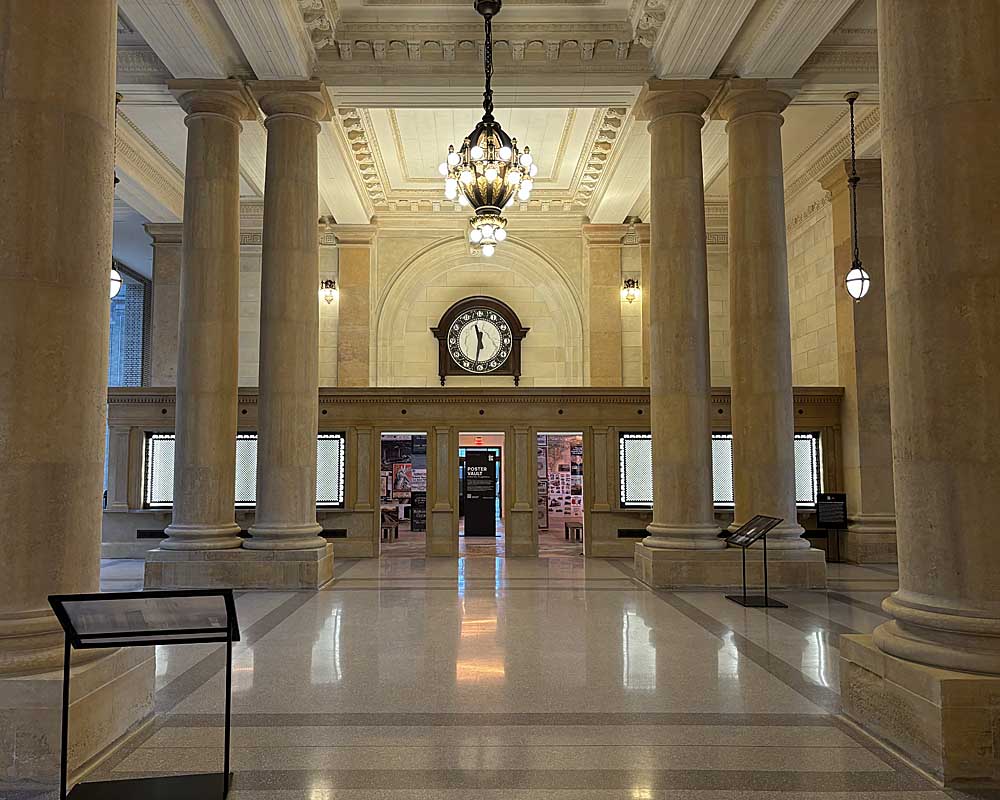







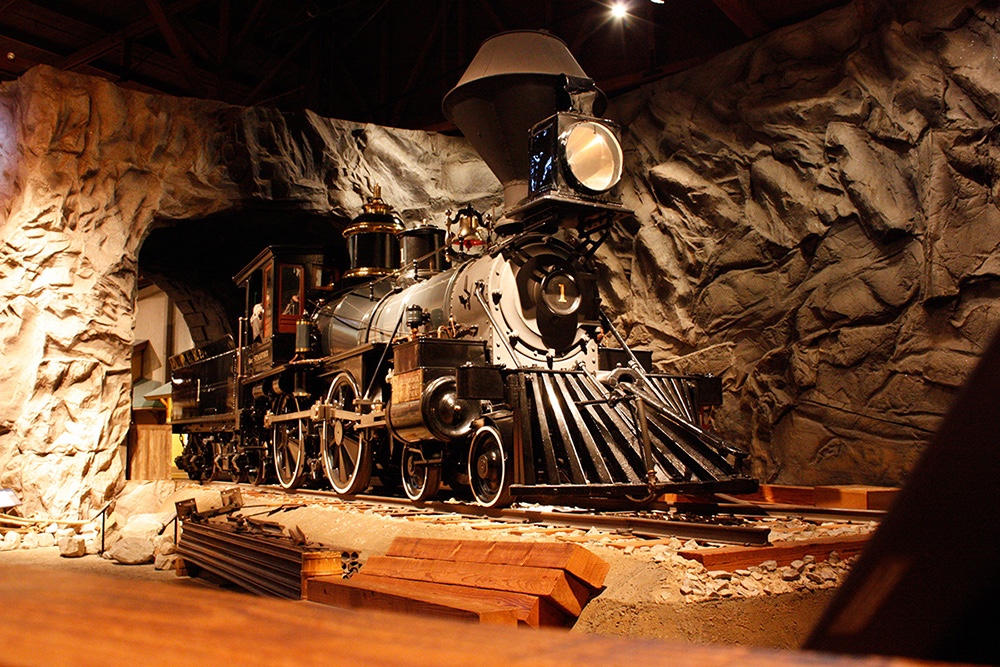

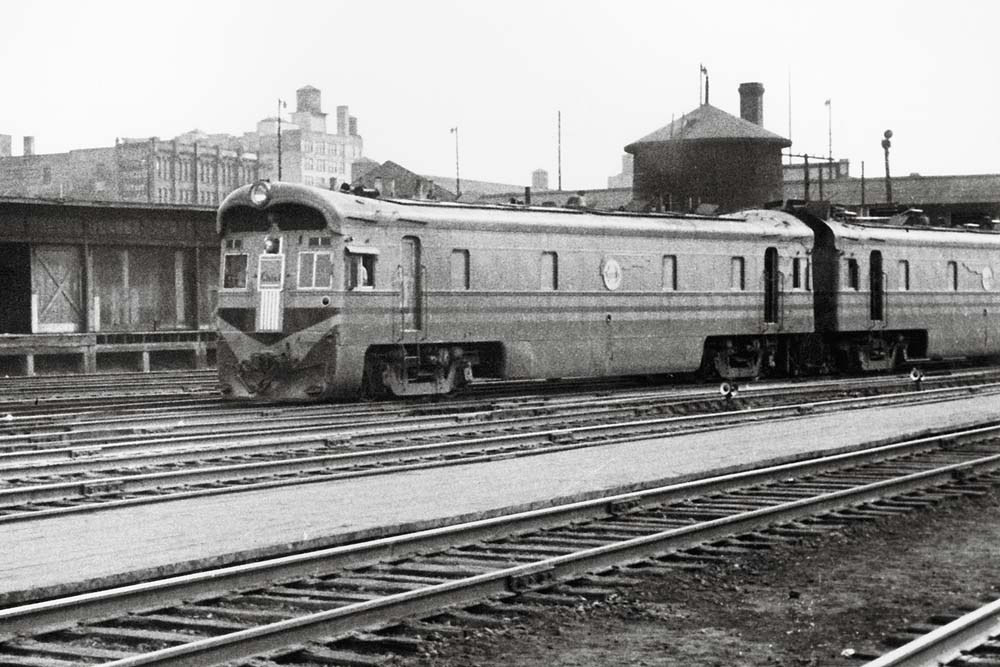




Memphis Union Station (1912-1969), adorned with marble façade and Beaux Art architecture, should be so fortunate to be preserved.
I have done my share of wandering about in downtown Detroit, staring at abandoned buildings. This entire story of the renovation and revival of MC is remarkable — and I doubt that another public company could have pulled off this level of spending. The presence of the Ford family as major stockholders even today, decades after Henry Ford’s passing, has been absolutely key to this story, I believe. If I am wrong, I’d like to know why. This is exactly the type of investment that is so desperately needed by Detroit — and Detroit is not alone in this predicament. How to bring back community pride and respect for self, for cities and towns that have suffered declines, is an important question. Thanks, indeed, to Bill Ford. Remarkable.
I never, EVER, thought I would see the day it was renovated. I roamed all over the place in the early 70’s, (taking the train in/out from A2) when there was still a lunch counter, barber, and bookstore, but not much else. Sneaking into an elevator, I had complete access to all of the upper floors, what a treasure trove, (I took absolutely nothing) and what a dump it had already become.
I remember riding the inaugural Turbo Train into the station too, we crept in after running over an old wooden railroad tie that had been placed on the track, with some shopping carts and other debris.
I SINCERELY hope that MC and Amtrak can come to some understanding, and card at least one of the Chicago trains in/out of Michigan Central Station. I too would like to say, “Thank you Bill Ford.”